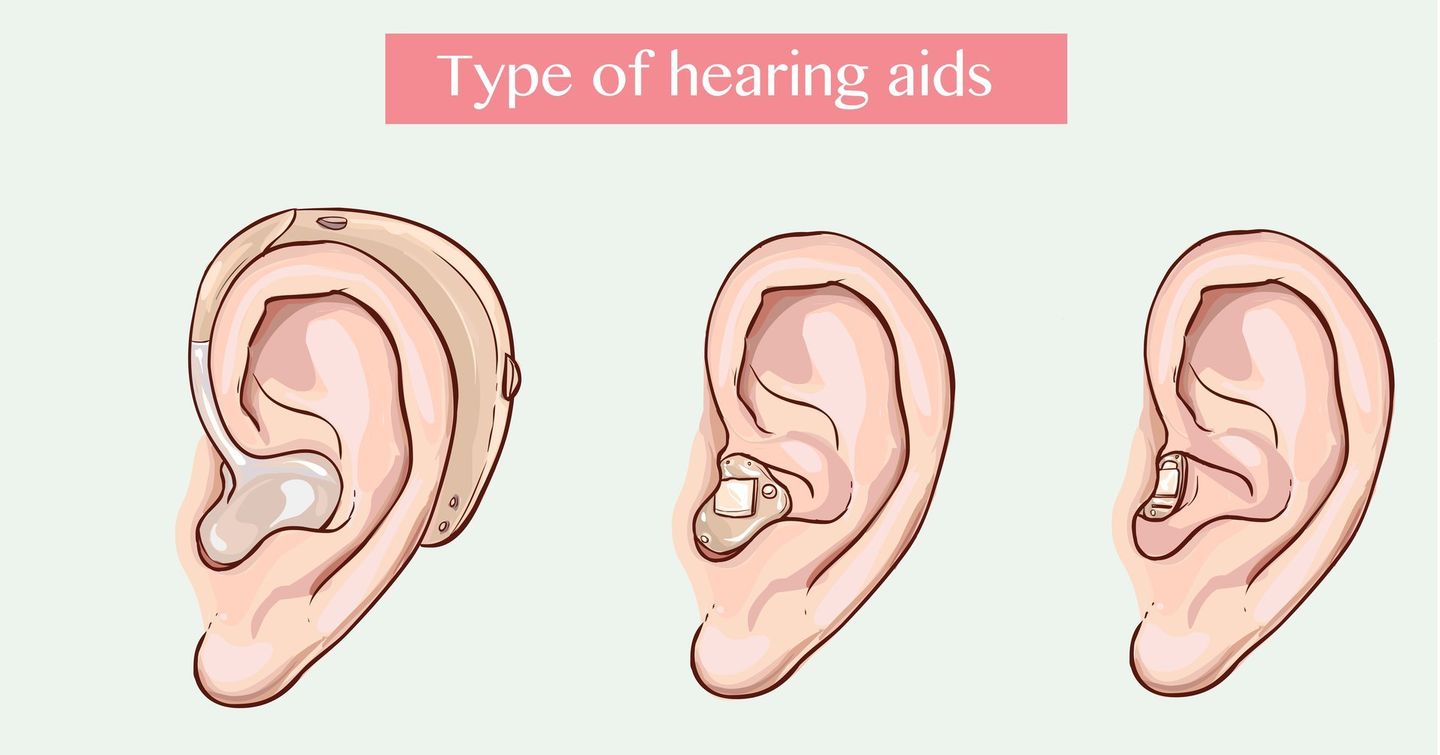Hearing Aid Styles
Wolfpack Hearing Clinic in Fayetteville, AR
When picking out a hearing aid, there are two basic styles to choose from:
- In the ear (ITE) styles - Usually custom-fit, these are worn in the ear and generally come in a range of different skin tones to match the outer ear.
- Behind the ear (BTE) styles - These sit on top of or behind the outer ear, with tubing that carries sound into the ear canal through a custom-fit earmold. Like ITE styles, BTE hearing aids are available in many different colors to blend with hair or skin tone, along with flashier styles.
Hearing aids also come in different sizes to accommodate different features, battery sizes, and control options. For either style, larger sized hearing aids can make use of more control buttons, more circuitry, and larger batteries to meet power needs.

In The Ear Hearing Aid Styles
Completely in the canal (CIC) & invisible in the canal (IIC) hearing aids
CIC and IIC designs are the smallest in size on the market. They sit deep in the ear canal and are usually chosen for individuals with mild to moderate hearing loss. Both offer high cosmetic appeal, because they’re virtually invisible when worn. However, they are prone to ear wax and moisture damage, and don’t tend to come with manual controls.
In the canal (ITC) hearing aids
Appropriate for a wide range of hearing losses, ITC styles sit in the lower part of the outer ear bowl, and are slightly larger in size than IIC and CIC hearing aids. Comfortable to wear and easy to handle, ITC styles typically have a longer battery life and can hold more features.
Low profile hearing aids
Low profile styles range in designs that fill about half the outer ear bowl to almost entirely. These designs, like ITCs, are large enough to accommodate additional features like exterior control options, and are a good choice for people with dexterity problems.
Behind The Ear Hearing Aid Styles
Mini BTE hearing aids
These styles sit behind the outer ear, with discreet tubing that routes sound into the ear canal, typically connecting with a soft tip. The result is known as an “open fitting,” and is a good choice for mild to moderate high-frequency losses.
Receiver in the canal (RIC) and receiver in the ear (RITE) Hearing Aids
RIC and RITE designs hold their speakers in the ear tip, instead of built into the hearing aid center. The speaker sits close to the eardrum, while the processor and microphone fit in a small case behind the ear.
BTE and earmolds
These styles are designed to suit any kind of hearing loss, from moderate to severe. They have a longer shape that follows the outer ear, and generally accommodate more features and controls than other styles. And because the hearing aid’s electrical parts sit behind the ear, it is generally less susceptible to wax or moisture damage.
